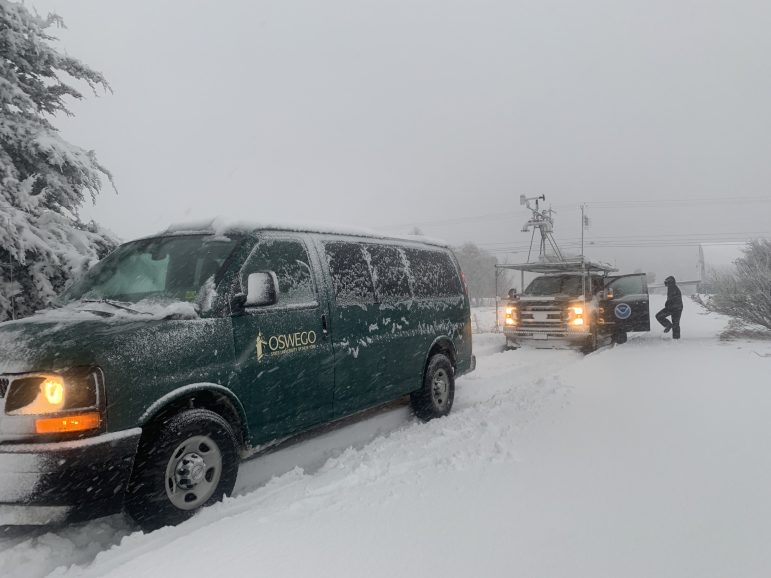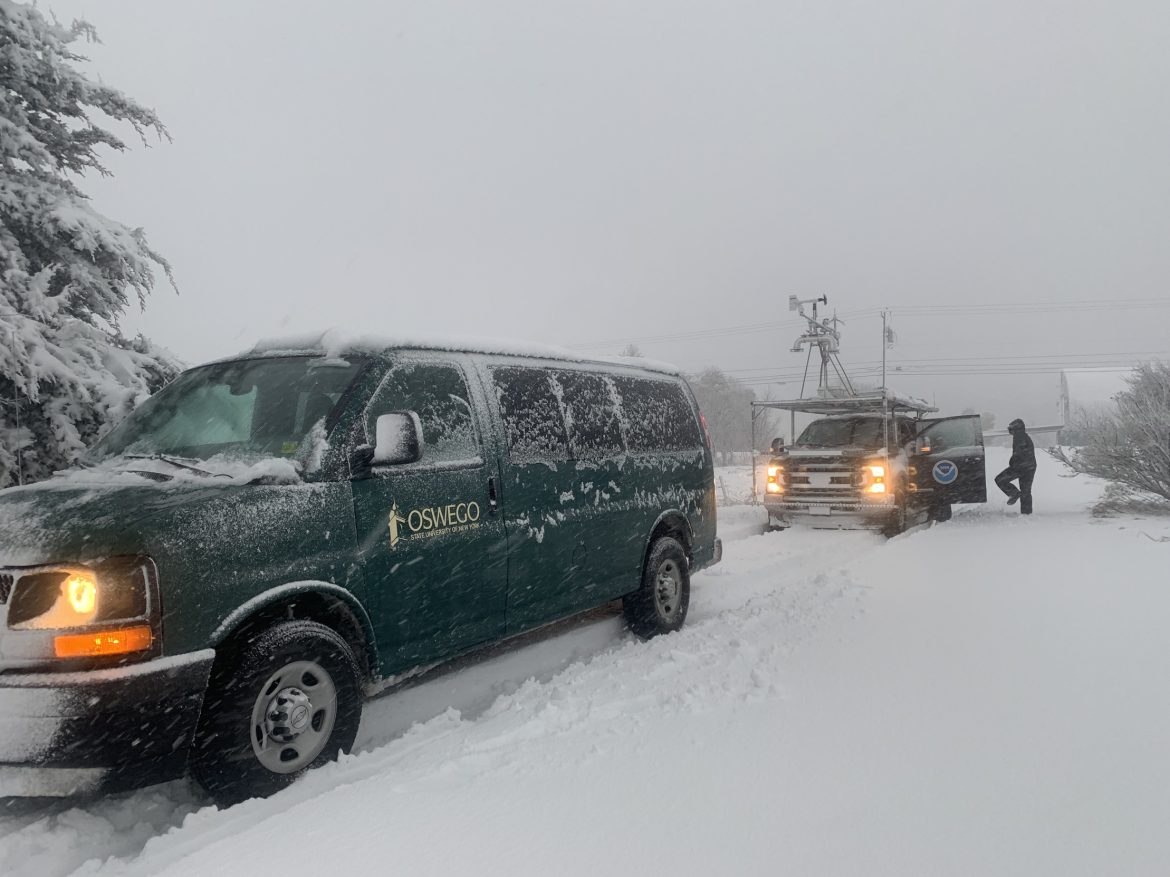
By Julia Belden
For most Great Lakes residents, winter storms inspire visions of cozying up by the fireplace under a thick blanket and enjoying a mug of hot chocolate.
The weather outside may be frightful – but for a group of meteorology researchers and students based at SUNY Oswego, it’s a golden opportunity for science.
From November 2022 to February 2023, scientists – and a small army of undergraduate research assistants – braved frigid temperatures and deep snow to document winter lightning along the easternmost shores of Lake Ontario as part of a National Science Foundation-funded study.
The team analyzed lightning produced by winter lake-effect snowstorms using an array of equipment, including weather balloons and a mobile DOPPLER unit.
Also known as “thundersnow,” winter lightning is an impressive weather phenomenon, but winter storm conditions make it challenging to study.
The research team published their work in November 2024. Their primary findings indicate a significant relationship between winter lightning activity and the wind turbine farms that occupy the area just east of Lake Ontario’s shoreline.
Scott Steigar, professor of meteorology at SUNY Oswego and the study’s lead author, said an earlier Lake Ontario meteorological study sparked the research team’s interest in the wind turbines.
During the previous study, the researchers noticed “a lot of the lightning tended to happen not over the lake like it did in previous data we saw, but more inland over wind turbines,” said Steigar. “We hypothesized that the wind turbines were changing the lighting climatology of the area.”
Hundreds of wind turbines populate the Tug Hill region of New York, about 30 miles inland of Lake Ontario.
The largest wind farm in the area, Maple Ridge Wind Farm, was completed in 2006 and produces 322 megawatts of energy – enough to power more than 138,000 homes, according to a fact sheet provided by the farm’s owner, EDP Renewables.
Each turbine is 260 feet tall, making it a prime target for lightning bolts. Steigar said winter conditions favor more lightning-turbine interactions, as winter clouds hang lower in the sky “and the turbines can ‘poke’ the clouds, if you will.”
The data collected during the study confirmed the researchers’ suspicions: the wind farms were “hot spots” for winter lightning. Approximately one-third of the study’s 246 documented lightning strikes were associated with (occurred within 300 meters of) man-made towers – including wind turbines.
Lightning occurring inland, as opposed to over the lake, raises the danger risk to people and wind turbines alike.
While the turbines are designed to withstand lightning strikes, Steigar said that powerful lightning could potentially damage the enormous structures.
As our economy shifts toward more renewable energy, studies like this one provide important information for policymakers, energy companies and the public.
Student researchers critical to study success
Steigar said he designed the Lake-Effect Electrification Project, or LEE, with student participation in mind.
“One of my goals was to give [my students] opportunities I wish I’d had when I was a student,” he said. “For meteorologists, doing stuff in the field – I mean, that’s like Christmas morning, you know?”
More than 20 SUNY Oswego undergraduate students worked on the study, enduring harsh winter conditions in the name of science.
During one winter storm, a student team worked out in the field for 12 hours overnight collecting data. The students were accompanied by scientists and trained in winter survival and storm safety, Steigar said.
Kaitlyn Jesmonth was one of the students involved in the LEE study. She’s now a graduate student in the Department of Climate, Meteorology and Atmospheric Sciences at the University of Illinois Urbana-Champaign.
“This project is a great testament to how important it is for undergraduate students to get hands-on experience in research,” Jesmonth said.
Originally from Albany, N.Y., Jesmonth has a long-standing fascination with lake-effect snow and attended SUNY Oswego to be close to the action.
As part of her work on Project LEE, she worked out in the field setting up and monitoring equipment as well as creating forecasts for incoming lake effect storm systems (something she’s especially proud of).
Jesmonth also captured rare footage of a lightning bolt in a lake effect snowstorm.
Winter lightning, according to both Jesmonth and Steigar, is tough to capture on film due to poor visibility during snowstorms.
“As far as I know, and I’ve been studying this now for 20 years, I’ve never seen an actual photo or video of a lightning bolt during a lake-effect snowstorm,” Steigar said.
What’s next for lake-effect lightning research? Steigar and his colleagues are drafting up a proposal for a “LEE project part two” involving more scientific instruments and perhaps even an airplane for taking measurements inside of storm clouds.
He acknowledged the often-chaotic nature of scientific fieldwork and the potential for discovery: “I think really good science does this: it creates more questions than answers.”
